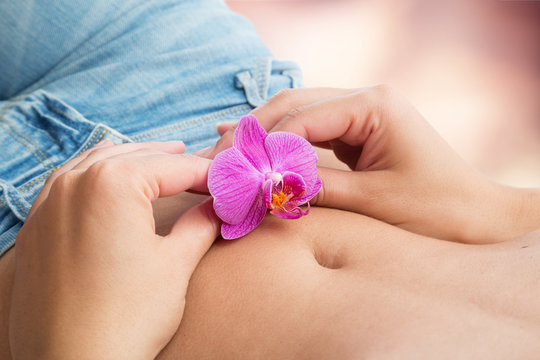Back
Day one after birth??
By Amalie Malka Flamm on 7/18/2024

Congratulations Mama!!!Welcome to the journey of postpartum recovery! Whether you're a new mother or a seasoned one, the first day after delivery can be both exhilarating and overwhelming. Your body has just gone through an incredible process, and it's essential to start nurturing it right away. Here are some key steps and gentle practices for Day 1 postpartum to support your pelvic floor and overall recovery.
1. Rest and Bond with Your Baby
The most important thing on Day 1 is rest. Your body needs time to recover from the physical demands of childbirth. Spend time bonding with your baby through skin-to-skin contact. This helps in regulating your baby’s temperature and heart rate and promotes breastfeeding.
2. Hydration and Nutrition
Staying hydrated is crucial for your recovery. Drink plenty of water to help with hydration, especially if you’re breastfeeding. Eat nutritious foods that are rich in vitamins, minerals, and protein to support tissue healing and energy levels.
3. Gentle Movement
While rest is crucial, gentle movement can aid circulation and reduce the risk of blood clots. Simple actions like deep breathing, ankle circles, and gentle stretches can be beneficial. Avoid any strenuous activities or heavy lifting. You can do gentle pelvic tilts and diaphragmatic breathing to start. Read more about diaphragmatic breathing in the paragraph below.
4. Pelvic Floor Awareness
On the first day, it’s more about awareness than exercise. Start by becoming aware of your pelvic floor muscles. You can do this through deep diaphragmatic breathing: - Lie down comfortably on your back or side. - Place one hand on your abdomen and the other on your chest. - Breathe in deeply through your nose, feeling your abdomen rise. - Exhale slowlythrough your mouth, noticing your abdomen fall. This gentle breathing helps relax your pelvic floor muscles and promotes relaxation and healing.
5. Perineal Care
If you had a vaginal delivery, your perineum (the area between your vagina and anus) might be sore or swollen. You can use ice packs to reduce swelling and numb the area. Peri bottles filled with warm water are great and can be used to rinse the area gently while urinating to reduce stinging. Pat dry gently with a clean towel instead of wiping to avoid irritation.
6. Manage Pain and Discomfort
It's normal to experience some pain and discomfort after delivery. Over-the-counter pain relief given by the doctor or hospital can help manage this. Additionally, staying ahead of your pain with regular dosing can make you more comfortable. Try to stagger the medications so that you always have one in your system. For example; take advil at 1 PM, Tylenol at 4PM, advil again at 7 PM and Tylenol at 8 PM.
7. Supportive Environment
Ensure you have a supportive environment around you. Accept help from family and friends, and don't hesitate to ask for assistance with chores or baby care. Your primary focus should be on resting and recovering.
8. Emotional Well-being
The first day postpartum can be an emotional rollercoaster. It’s normal to feel a range of emotions from joy to anxiety and everything in between!! Take time to talk about your feelings with your partner or a trusted friend. Remember, it’s okay to seek support if you’re feeling overwhelmed.
Postpartum recovery on the first day is all about gentle care and recovery. By prioritizing rest, hydration, nutrition, and gentle movement, you’re setting a strong foundation for your pelvic floor and overall health. Remember, recovery is a gradual process, and taking it one day at a time is key. Embrace this special time with your baby and be kind to yourself as you begin your postpartum journey. If you have any specific questions or concerns, feel free to reach out to your pelvic floor therapist or healthcare provider. They are there to support you every step of the way. You got this mama! We believe in you!!
Read More:
How Chronic Pelvic Congestion in Men Contributes to Prostatitis By Shannon Strauch, PTA, STMT-1 on 12/11/2024 How lymphatic issues can cause symptoms of prostatitis Prostatitis and Tight Pelvic Floor Muscles: A Comprehensive Guide By Shannon Strauch, PTA, STMT-1 on 12/10/2024 How a tight pelvic floor can be the reason for prostatitis symptoms
Are you ready to live pain free?
Request An Appointment